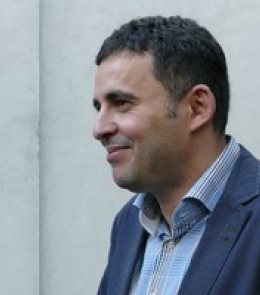Increasingly, we observe a specific type of crisis involving individuals who are accused of transgressive behavior. In our earlier blog on crisis communication types in (Belgian) media, we already highlighted the importance for organizations to be ready for this type of crisis.
This transgressive behavior ranges from simply embarrassing (public inebriation) to reproachable (toxic leadership, “open microphone” incidents with derogatory statements) to outright criminal (abuse, stalking, possession of illicit content).
Scandals can range from the simply embarrassing to the criminal
But these situations don’t lend themselves to a standard crisis communication approach or even classification, because they center of individuals and not organizations.
What scandals have in common
While the behavior underlying the scandal can vary, as a media phenomenon most of these crises share easily recognizable traits, like:
Explosive media coverage: media seem increasingly interested in bringing this type of stories. This might be driven by the imperative to “believe the victims” that became the norm in the #metoo era.
Strong outrage: a “shock and awe” element – these are fast-moving crises with strong public outcry and engagement, making them highly viral and perfect for social media algorithms which reward stories that move fast and invite comments and reactions.
Low inhibition on the side of media: media seem determined in these cases to “get to the bottom of things”. Frequently, they rely on anonymous witnesses which go into excruciating detail without deep fact checking. Think of accusations like “(female politician) made me carry her handbag”.
Once a person is under scrutiny, almost no aspect of their lives seems off limits to media
Once a person is under scrutiny, almost no aspect of their lives seems off limits – to exaggerate (only slightly): anyone that you have interacted with in your life is now a relevant witness – from your childhood neighbors to ex-colleagues
A direct impact on the person at the center of the scandal, regardless of the status of judicial or legal proceedings. Example: Lizzo being dropped off the shortlist of the Superbowl after accusations of creating a toxic workplace, but before any judge has had a chance to review the case and deliver a verdict on it
What makes scandals different from other crises?
Timothy Coombs and others have described these crises as “scansis“: a mixture of scandal and crisis. Elements of a scansis include:
The public sees an intentional injustice. This can be greed (profit motive) or any other type of intentional wrongdoing (lust, power, racism, entitlement,…).
This intentional injustice invites strong anger or moral outrage.
This leads the audience (and some of the media) to compassion for the victims and for a strong need for punishment. In literature, this is called “third party punishment”: punishment by outsiders to the transgression – like consumers, employers or media. In today’s vocabulary, it is more commonly known as “canceling”.
Moral outrage triggers an overpowering need to punish the offender
Outrage is the key emotion here (as it is in so many media and social media phenomena in recent years). Research has shown that moral outrage – the feeling that our norms were violated – leads people to want to punish the transgressor. This punishment can take different forms:
- negative word-of-mouth: writing or saying negative things about a person or organization
- boycott: engaging third party stakeholders to boycott a certain person, brand or organization
- ostracization: creating strong reputational barriers for people to engage in normal relationships with society
This explains why (perceived) transgressors feel that they are being subjected to a “trial by media”, especially when stories about transgressive behavior leak to the media before they have followed due process.
For instance: accusations against the lead singer of Rammstein reached the media before they had gone through a due process. The allegations led to a huge media storm throughout European media, but ultimately the German authorities did not file charges against the singer for lack of evidence.
The burden of proof in these cases becomes asymmetrical. It is not enough to create “reasonable doubt” – the accused must prove their innocence, which is a very high and sometimes impossible bar to clear.
How to deal with a scandal as an individual
The pressure from media, social media and other stakeholders when a scandal breaks is relentless and is overpowering.
Some people caught up in a scandal think they can rely on their popularity to “explain away” or minimize the crisis. But the audience has turned against them – fast
Some important considerations in the early hours and days of a crisis:
- Information. In every crisis, there are more questions than answers, and these can quickly overwhelm the capacity of even large companies to find and formulate answers. But companies can buy time by saying: “please give us some time, we are looking into it”. An individual is considered to have full knowledge of their actions in the past and cannot expect any leniency from media. There are fewer useful or relevant holding messages that can be used to buy time.
- Roles and faces. Companies can sideline or fire executives or other employees. This can buy time and goodwill, as it looks like “corrective action”. As an individual, you cannot sideline or fire yourself. Also, companies can initially react through spokespeople that are “expendable”. As an individual, there are no surrogates. Lawyers can fill the gap somewhat, but sending a lawyer into the fray can be construed as an admission of guilt or worse – as a way to intimidate accusers.
- Shell shock. We’ve seen executives relishing crises – even to the point of becoming a bit addicted to the rush a crisis provides. Crises in companies have a way of inviting focus and clarity, and quite a few CEOs really rise above themselves during crises. The opposite is true for individuals. They experience a profound shell shock as they see their private and professional life take a devastating hit. It becomes hard to think clearly and to make good decisions, exactly at a time when clear thinking and sound decisions become crucial.
- Flow of information and trust. In the early days of scandals, it’s not always clear to what extent accusations will stick. Whereas organizations and companies generally share freely with lawyers and communication consultants, the individual might not remember everything, might doubt their own memories (see: “Shell shock”) and might not fully trust their advising team with all the facts and details. On the other hand, the advising team might not fully trust the client to come clean with all the relevant facts, which might lead them to flawed advice.
- Clinging to public persona. Sometimes, people at the center of scandals misinterpret the extent to which they still have public support. They think they can explain things away, minimize them or “offer context” on them. They underestimate how fast popularity is replaced by doubt and scepticism, and how much damage these ill-advised attempts at minimizing the issue will do to their reputation
Response strategies to scandal
In crisis communication research, Benoit’s “image repair theory” lists five main strategies for crisis response:
- Denial
- Simple denial: “I didn’t do this”
- Shift blame: “Someone else did this”
- Evade responsibility
- Provocation:”I responded to actions by someone else”
- Defeasibility: “I didn’t know about this”
- Accident: “This happened outside my will or it happened to me – I’m a victim here”
- Good intentions: “I meant well”
- Reduce offensiveness
- Bolstering: “I’m a good person”
- Minimization: “This is not as serious as it’s made to look”
- Differentiation: “I didn’t steal your laptop, I borrowed it without permission”
- Transcendence (appeal to a higher norm): “I stole because my child was hungry”
- Attack the accuser: “This is fake news, the accuser is lying”
- Compensation: “I will make it right with the victim”
- Corrective action: “I will repair damage or prevent recurrence”
- Mortification or apology: “I’m sorry”
These strategies can be combined, but as the literature warns: “More strategies are not necessarily better”. Also, some strategies fit together, others don’t.
For instance, mortification (“I’m sorry”) works well with compensation or corrective action (“it won’t happen again”). But minimization does not work well with mortification: “I’m sorry but I don’t think it’s a big deal” is not helpful and will not work as an image repair effort.
In general, Benoit suggests using mortification (“I’m sorry”) when you’ve committed an offensive act. He gives the example of Hugh Grant, who was caught with a prostitute in 1995.
Grant did not deny having committed the act, nor did he try to minimize it, but he did deny many of the media-printed rumors. In other words, he did not deny committing the acts, but denied the alleged effects of the acts as presented in the media.
We also call this “give to get”. Yes, I did this, but not this. You offer an admission of guilt (“give”) but in return you receive the acknowledgement or at least the opportunity to explain what you didn’t do according to you (“get”).
At the same time, Grant attacked his accusers. As Benoit notes:
Attacking one’s accusers can be inconsistent with mortification, but in this case Grant wasn’t attacking the media in an attempt to dismiss the accusations against him, but in an attempt to garner sympathy for his family, girlfriend, and himself. In fact, attacking accusers probably would not have helped much if he hadn’t used mortification. Nor did he attack in a shrill fashion, which might have undermined his defense
How to survive a scandal
There is no fixed playbook for scandals, but we can offer some advice and some patterns that seem to work better than others:
Realize that it will take time
It takes a long time for people to understand what happened to them and to make sense of it. Think: months or years rather than weeks or days. Also, although it might seem during the first days and weeks that the media coverage will not relent, it will at some point run out.
In a recent case in the Netherlands, television presenter Matthijs Van Nieuwkerk waited almost 10 months to finally discuss how he experienced the accusations about toxic leadership and transgressive behavior. During that time, he had effectively retired from public life. After ten months, however, people seemed to be ready to hear and consider his side of the story.
When he finally spoke, he refused to rehash the allegations in detail – “I will not go over the coverage about me with a red and green pen”, “I will not be the reviewer of the coverage about my person”. Instead, he offered a narrative of how he had experienced the allegations and how he had gone through an extended period of soul searching.
Don’t add fuel to the fire
Another reason to prefer silence initially is that you might add fuel to the fire.
Remember that the audience is eager to see “third party punishment” exacted. Journalists feel pressure to serve this need. Speaking too soon might encourage this call for punishment, and might invite fresh action on the part of detractors – like boycotts, calls for resignation, additional complaints registered.
Watch out for backlash – speaking too soon might trigger additional complaints
This backlash or bandwagon effect is typically something that will occur at a time when the crisis has very strong momentum in media.
This is what happened when Belgian artist Jan Fabre reacted to a survey among female workers in the performing arts in 2018 about transgressive behavior. Up to 40 percent of female dancers and actors indicated that they had been subjected to transgressive behavior at work, often sexually oriented. Fabre stated emphatically that at his company he had “never had any trouble with transgressive behavior, ever“.
This triggered a complaint by 20 former dancers and interns of his company Troubleyn. In 2022, he was convicted to a prison sentence of 18 months (deferred) for violence, bullying and unwanted sexual behavior at the workplace. Fabre still disputes the charges but indicated through his lawyer that he would not appeal to avoid reigniting a reputational media storm.
Avoid unforced errors
During that initial storm, you can damage your reputation beyond repair by saying things that turn out to be untrue, or by changing your strategy abruptly.
It’s natural to go through all stages of grief – anger, confusion, negotiation, denial – before arriving at something like acceptance. But if your communication and legal strategy change with all these different stages of grief, the audience will question your sincerity.
Realize that anything you say will go on the record – and can be used against you. While it takes superhuman strength to resist speaking to media when you’re in the eye of the storm, your interpretation of the situation might change considerably over time.
Watch your tone
Related to unforced errors, tone is key in preserving the core of your reputation.
Note that Benoit specifically says that Hugh Grant didn’t use a “shrill fashion” to attack his accusers, “which might have undermined his defense”. Avoid contact with media when you are feeling emotional and overwhelmed.
Lashing out, self pity or pleading and bargaining with the audience will come across as insincere and self-absorbed.
Bring proof
Realize and accept that the burden of proof for you as the “accused” is much higher than for your accusers. If want to challenge certain facts, make sure to offer tangible (if possible written) proof.
Build long-term trust among journalists by showing that when you speak, you speak with conviction and with facts and proof to back your assertions. This can feel futile in the beginning but will be the first step to repairing your image.
Look in the mirror
Finally, the people who best survived scandals are the ones where the audience felt that they had genuinely gone through a period of soul-searching. On the other hand, people who try to stage a comeback as if nothing had happened will find it a lot harder to gain entry again into “polite society”.
Sincere acknowledgement of wrongdoing is usually non-negotiable to enable a return into the fold
It’s the audience (and media) who will decide when your “time out” is over, when you’ve been punished enough. Sincere acknowledgement of wrongdoing is usually a non-negotiable gate through which readmission into the symbolic order passes.
Matthijs Van Nieuwkerk said in the interview that he was “ashamed” (mortification), that he spoke to and apologized to the people involved (corrective action) and that he had asked himself “why he had to be such a d*ck at times“.
These things help to humanize him, to show that he had genuinely tried to understand himself and his behavior – and will go a long way to making a comeback possible.
Sources
- Benoit, W. L. (2015). Accounts, excuses, and apologies: Image repair theory and research (2d ed.). Albany: State Univ. of New York Press.
- Champion, L. (2015). Crisis Communication and Celebrity Scandal: An Experiment on Response Strategies. USF Tampa Graduate Theses and Dissertations.
https://digitalcommons.usf.edu/etd/5661 - Coombs, T. W. & Tachkova, E. R. (2018). Scansis as a unique crisis type: theoretical and practical implications. Journal of Communication Management. 23. 10.1108/JCOM-08-2018-0078.
- Coombs, T. W. & Tachkova, E. R. (2023). How Emotions Can Enhance Crisis Communication: Theorizing Around Moral Outrage. Journal of Public Relations Research. https://doi.org/10.1080/1062726X.2023.2244615
- VRT NWS (2018, september 13). De aanleiding voor de open brief: Jan Fabre zei in juni dat er in zijn compagnie nooit een probleem is geweest. vrtnws.be. https://www.vrt.be/vrtnws/nl/2018/09/13/de-aanleiding-voor-de-open-brief/



























































































